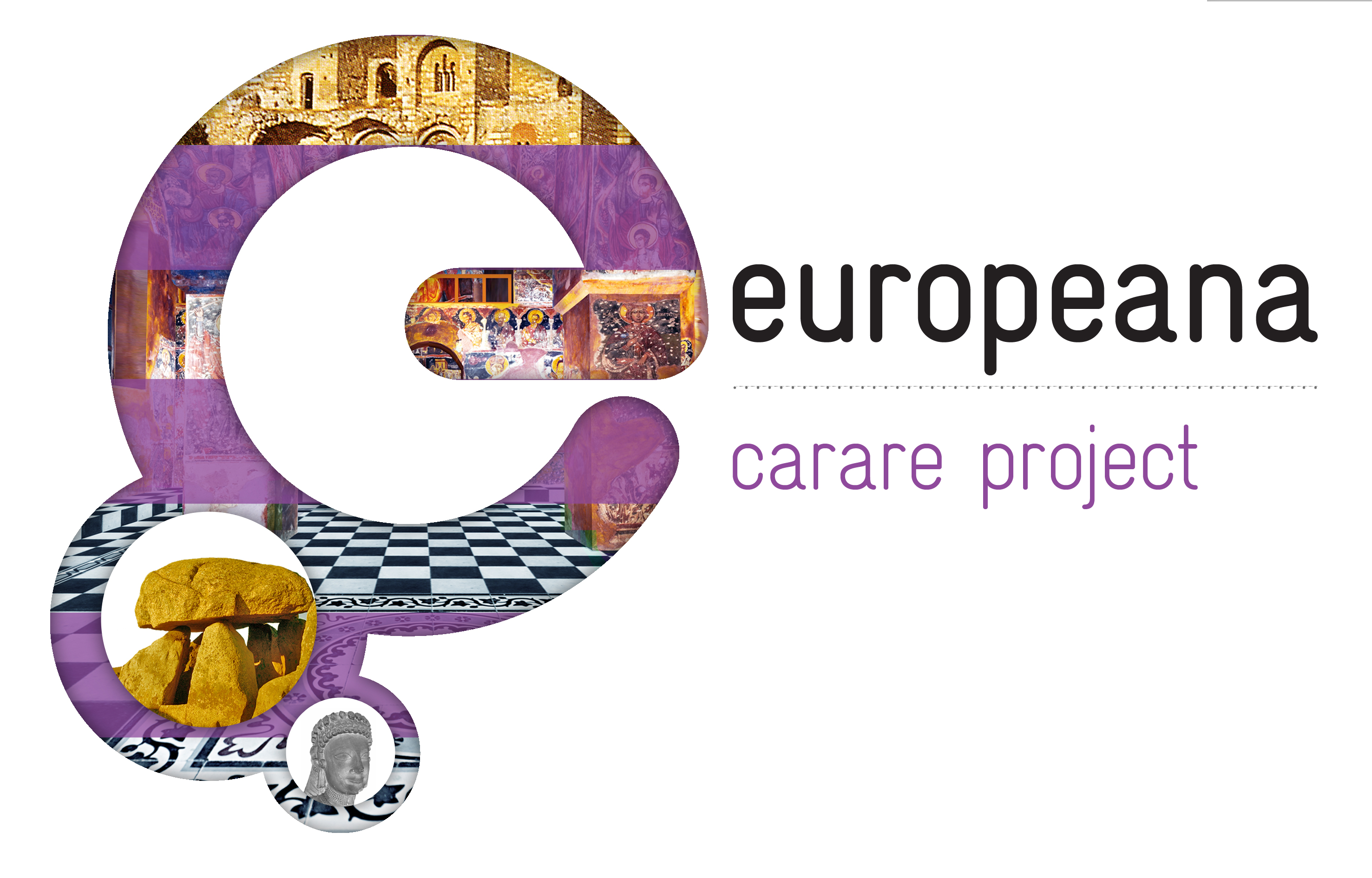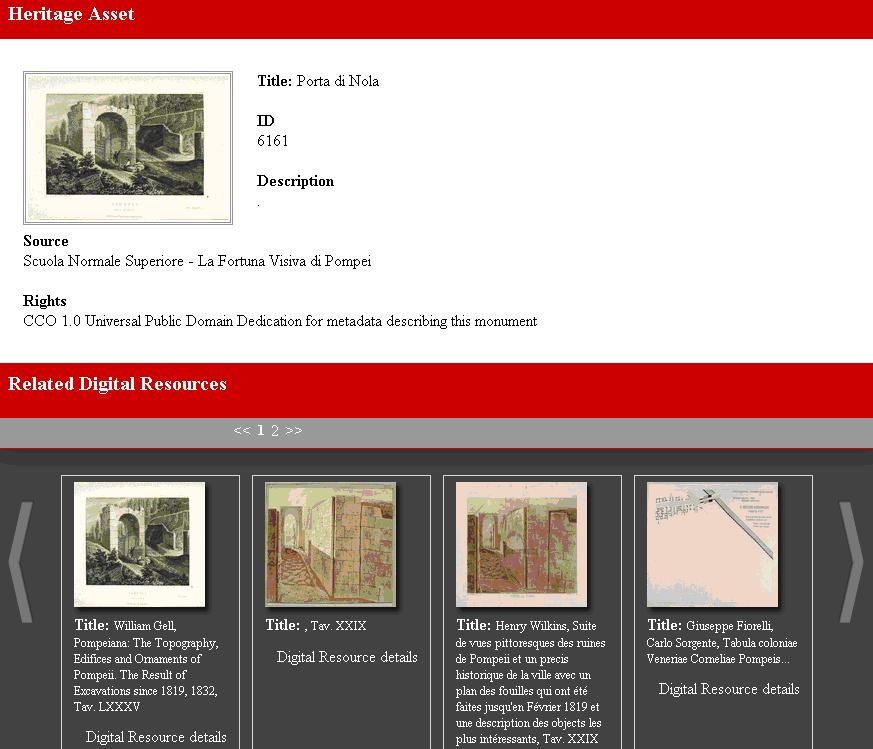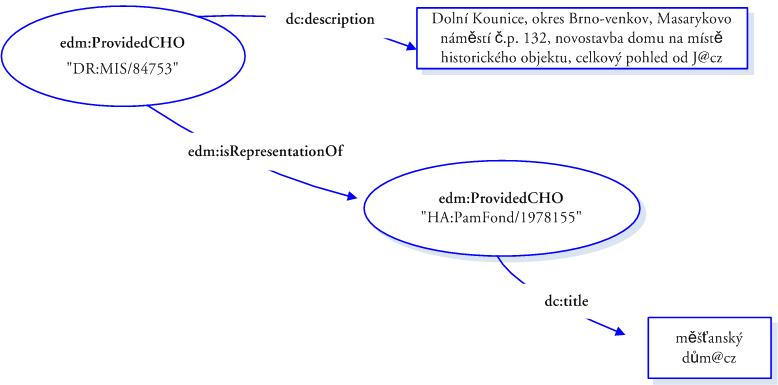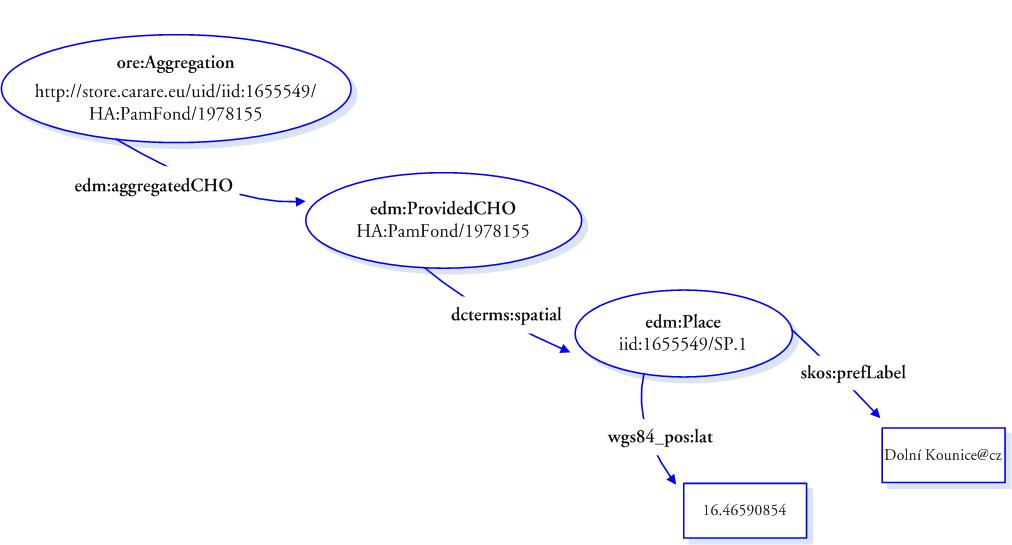Carare and EDM
This case study details the mappings decisions the CARARE project had to take when converting data in EDM. It discusses the creation of identifiers for resources, the representation of archaeological objects and the cultural objects related to them, and the representation of entities for places.

CARARE was a three-year project (February 2010 to January 2013) making digital content from the archaeology and architecture heritage domain available to Europeana. The content submitted by the project has been described using the Europeana Data Model (EDM). This case study highlights the key challenges the project had to face when modelling and converting archaeological and architectural metadata to EDM.
CARARE first established a domain-specific metadata schema based on existing standards from the archaeology and architecture domain, such as MIDAS Heritage, LIDO and CIDOC CRM. Then further work was carried out to create a mapping from the CARARE schema to EDM.
Using EDM, CARARE modelled a network of connections between the heritage assets themselves and other resources that are related to the assets. These resources describe either specific real objects with their digital representations or born-digital objects. In addition, it used the EDM contextual classes to model entities such as places and concepts.
1) Use of the main EDM classes and Identifier creation
The CARARE mapping uses EDM classes to describe different types of information about:
- Heritage assets, such as monuments, buildings or other real world objects, identified by a set of particular characteristics that refer to their identity, location, related events, etc. Information carried by a heritage asset includes: textual metadata (such as title, etc.), thumbnails and other digital objects.
- Real world cultural objects with their digital representations which provide other sources of information about the heritage asset (historic drawings and photographs, publications, archive materials etc.).
- Born-digital resources related to these objects, such as 3D models.
The Europeana Data Model requires a unique identifier for each class. Since unique identifiers could not be guaranteed in the original data, CARARE created new identifiers for each resource based on the local identifier provided by the project partners.
Figure 1 Creation of class identifiers from the local identifier.
In EDM, each 'ProvidedCHO' gives rise to an aggregation class, whose role is to bundle a 'ProvidedCHO' with 'WebResources' (digital representations of the provided objects made available on the web). CARARE created unique identifiers for each 'ore:Aggregation' resource, as described in Fig. 1. These aggregation identifiers are web-enabled, in the sense that they redirect to a landing page that CARARE creates for each object. The landing page provides a unique identifier that can be used in the data, but also visually aggregates the heritage asset with its representations, collection information and information about related activities.
Figure 2 Heritage asset and the objects related to it on the CARARE landing page.
2) Representing archaeological objects and the cultural objects related to them
In terms of EDM representation, the different information sources presented on the landing page of an archaeological asset (as in Fig. 3) give rise to different provided CHOs. Each print, map, or book about an archaeological place, such as a house in Pompeii, counts as a separate object provided to Europeana.
These new identifiers assigned to each object make it possible to create an explicit link between the heritage asset and a related object. For instance, the relation between a heritage asset and a document describing it is expressed using the property 'edm:isRepresentationOf' with the URIs of the corresponding resources.
Figure 3 Relation between an heritage asset and a document using edm:IsRepresentationOf
3) Data conversion decisions
The datasets aggregated by CARARE present a lot of differences in terms of data granularity. When converting this data to EDM, CARARE had to make decisions that were specific to each dataset. Three scenarios were defined:
- Scenario 1: a heritage asset such as a building is related to a series of cultural objects such as historic drawings, books and photographs in a CARARE object. The heritage asset and each of the cultural object s give rise to provided CHOs. This situation is shown in Fig. 1.
- Scenario 2: a book, photograph or map relates to more than one heritage asset and are contained in more than one CARARE object. Each heritage asset creates a provided CHO and each cultural object creates a provided CHO. Any duplicate provided CHO created as a result of the book or picture being referenced by more than one heritage asset are removed.
- Scenario 3: a heritage asset is represented by a series of photographs which are published online with simple descriptive metadata. A provided CHO is created for the heritage asset and this is aggregated together with 'edm:WebResources' created for each of the photographs.
4) Richer Web Resources
For each cultural heritage object (a monument, a building or other real world object), CARARE provides relations to multiple digital resources. EDM allows these different resources to be connected to each other, and also permits detailed description of these resources. One of the requirements of EDM is the separation of information related to a cultural heritage object from the information describing the digital representation of this object. This distinction is particularly important when dealing with rights metadata: an object and its digital representations might have different, or even contradictory, rights statements which determine the conditions for re-use of the content. In addition to the rights information provided in the 'ore:Aggregation' class, CARARE provides rights information specific to these digital resources.
<edm:WebResource rdf:about="http://iispp.npu.cz/mis_public/documentPreview.htm?id=127767">
<dc:rights>Národní památkový ústav</dc:rights>
<dc:rights>2011-01-01</dc:rights>
</edm:WebResource>
The rights values described at the 'WebResource' level are different from the rights that apply to the metadata. Metadata delivered by providers such as CARARE are available in Europeana under the Creative Commons CC0 public domain dedication.
5) Representation of ‘Place' entities
The spatial dimension is an important concept in the archaeology and architecture heritage domain. The previous metadata standard used by Europeana, ESE, did not differentiate temporal and spatial coverage information well enough for archaeological or architectural heritage. EDM, being semantically richer than ESE, allows the representation and the description of entities such as places, by a specific class: 'edm:Place'.
CARARE uses the 'edm:Place' class to describe information related to a specific place separately from the 'ProvidedCHO'. The relation between the 'ProvidedCHO' and its related place is created via the property 'dcterms:spatial'.
Figure 4 Representation of a place ('edm:Place') in relation to a cultural heritage object.
Each place has spatial coordinates and a label, sometimes provided in different languages.
<edm:Place rdf:about="iid:1655549/SP.1">
<wgs84_pos:lat>16.46590854</wgs84_pos:lat>
<wgs84_pos:long>49.07024077</wgs84_pos:long>
<skos:prefLabel xml:lang="cz">Dolní Kounice</skos:prefLabel>
<skos:altLabel>Dolní Kounice</skos:altLabel>
<skos:note>132/19, Masarykovo náměstí, Dolní Kounice, 66464, Czech Republic</skos:note>
</edm:Place>
The inclusion of spatial coordinates in the data enables archaeology and architecture data sets to be included in geo-portals alongside other datasets used in planning, development control, tourism and other map-based services. In the Europeana context, the spatial information is used to enrich other datasets and to provide new features such as map browsing.




